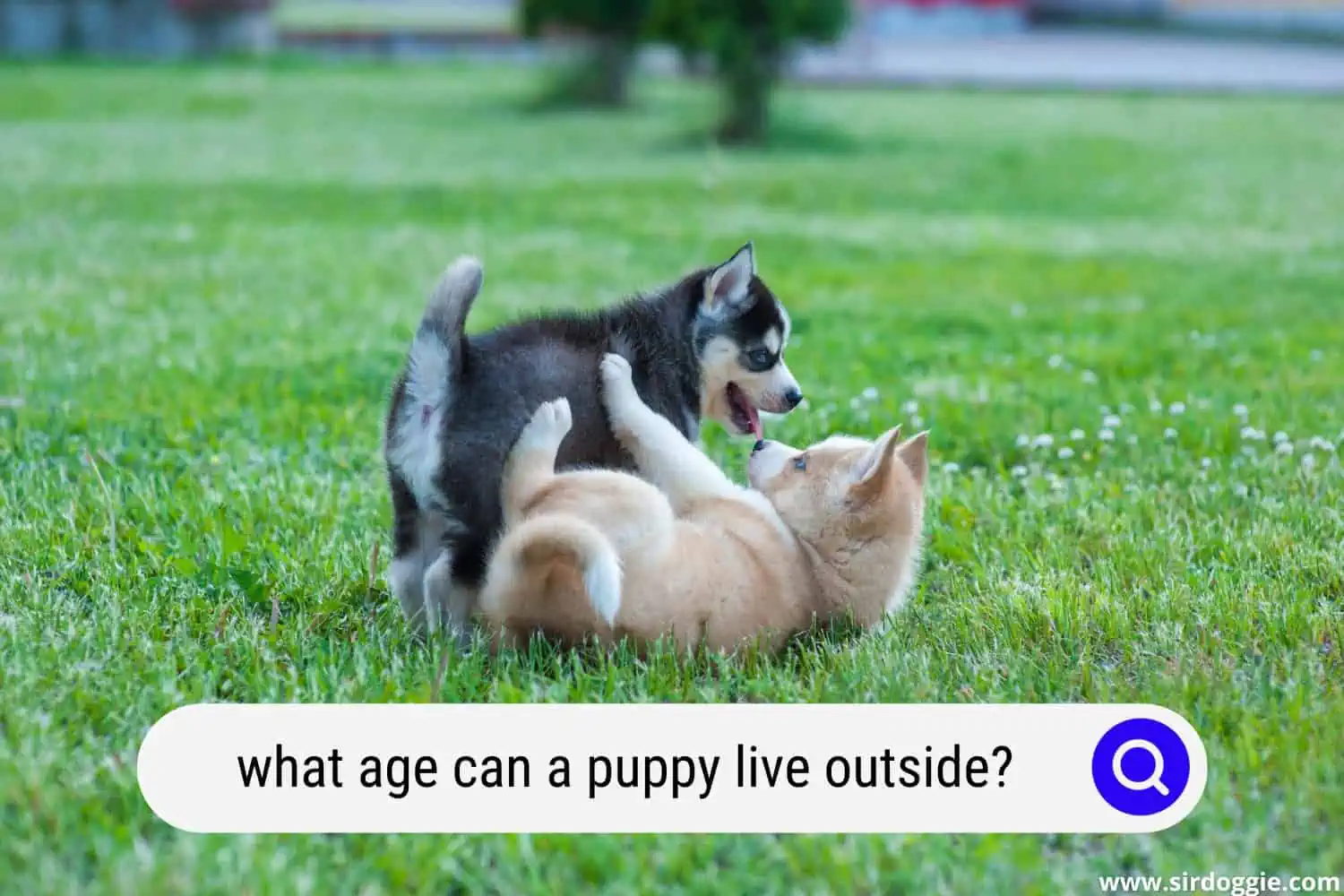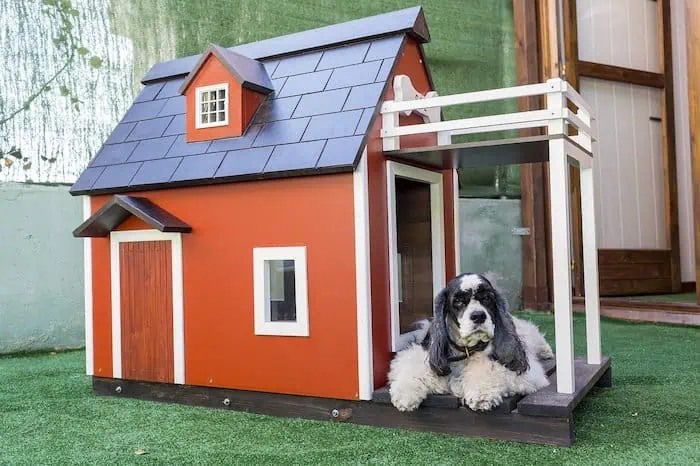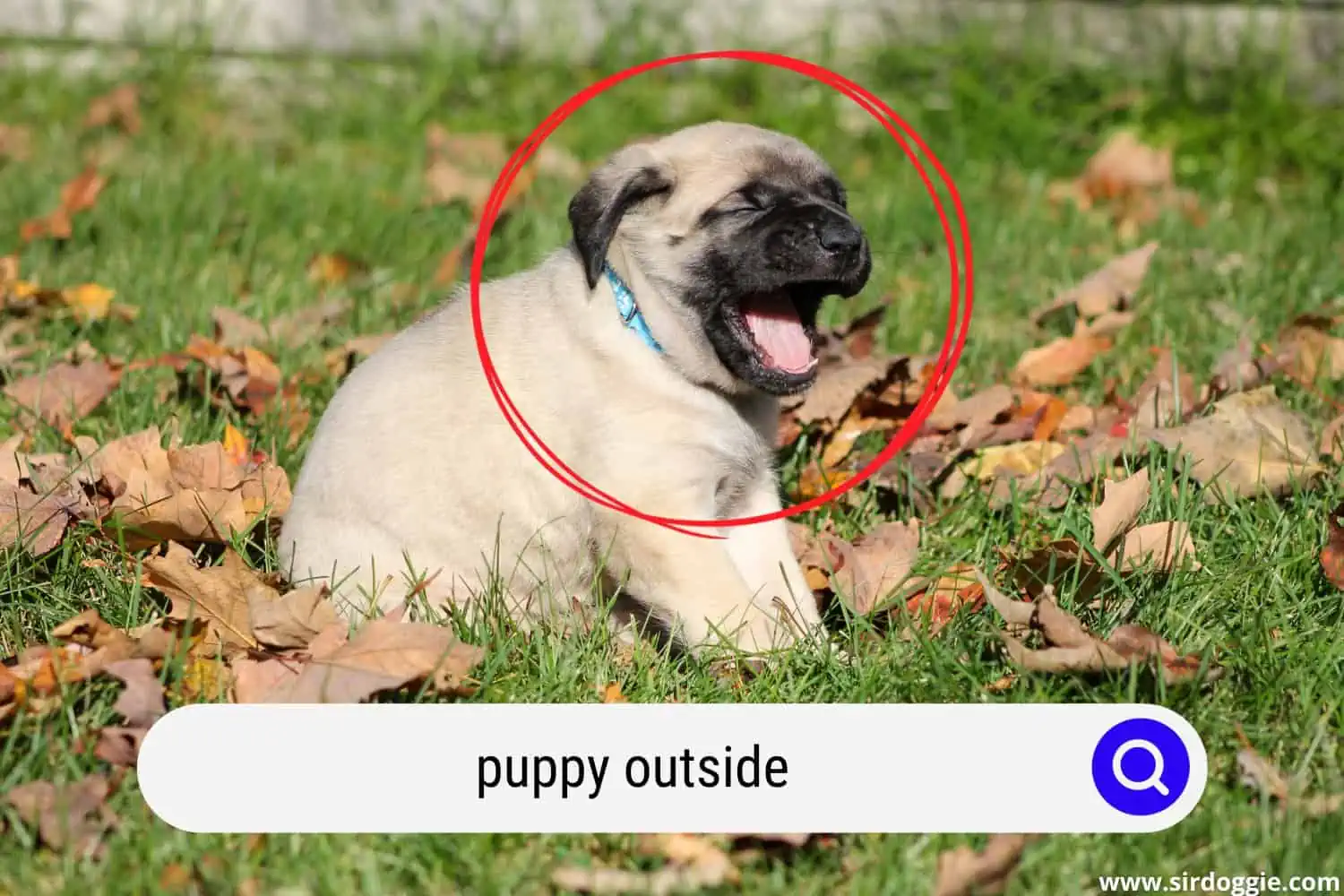What Age Can a Puppy Live Outside? Read This First!
We all love puppies, and attention during their first few months is very important for how they develop, physically, mentally, and even socially. A question will surface for every first-time master of a new baby dog, and that is: at what age can a puppy live outside?

Generally, the life stage where a puppy can start to live outdoors is around the 1-year-old mark. It could be a little sooner, depending on factors like each dog’s development, temperament, size, social skills, health, and the environment of the home.
Probably the first thing to consider is whether should you leave a puppy outdoors overnight if your region is prone to very cold temperatures. Forcing a young pooch to brave icy temps, after a whole life of indoor heating, not only is cruel, but it could prove fatal.
If overnight temperatures in your neighborhood are acceptable for humans to camp outside, then think about whether it’s time to give your beloved young friend a test outdoors. There are actions you can take starting well before that point to prepare your puppy.
Puppies and Body Temperature Regulation
We pull this fact out to emphasize that very young dogs do not have the ability yet to regulate their body temperature. Don’t assume that because they are animals and once lived in the wild, they are immune to the dangers of outside living.
A puppy should be a decent size, and a healthy weight to help it fend off very cold temperatures or severe elements. It also applies to being too hot. In fact, it’s good advice for every dog: get them inside for extreme temperatures, cold or hot.
Tips to Prepare Your Puppy for Living Outside
Having a new puppy is so much fun, an opportunity for lots of laughs, and the building of many good memories. However, please don’t take caring for a puppy lightly. There are things you can do in its first months with you that will pay positive dividends for you both throughout your relationship together!
As you think about when to transition your puppy to live out, think about things to do to train it not only for outside living but also to help its behavior in other ways. Here are some tips:
Vaccinate
Getting all the needed vaccinations by the suggested ages is recommended for every puppy. Once you get your tiny new pet, become engaged with a veterinarian’s office, ask them when they recommend vaccination shots and follow their directions.
Remember that the transition from always indoors to mostly always outdoors is not just about night temperatures. No matter where you live, there are vectors (biting insects or ticks) that transmit diseases between animals, not to mention the potential for dangerous other animals that may visit like raccoons or possums, or maybe even big cats. Rabies is a real threat, and even bad scratches from neighborhood cats can cause pain and infections.
Socialize
Keeping a puppy inside all the time, and then just forcing it outside all the time, is irresponsible as a human and disrespectful, maybe even hurtful, to a dog.
It’s important to introduce puppies to being around other dogs and people, during their first 12 months of living. It doesn’t have to mean tossing them into groups of canines whenever possible. But once they are able to walk around a yard fairly easily by themselves, and show a tendency to roam and scout around alone, it’s probably time to test how they react among other dogs.
The more they’re around other dogs the more comfortable they will be. This is important for a lot of reasons, among them in case your puppy escapes the yard or gets away into the neighborhood. At least prepare your puppy for surprise encounters with other animals or unknown humans.
Train
It takes quite a bit of responsibility to train a puppy dog ~ much more in fact than for pet cats. Aside from the training needed to go on walks on a leash without too much pulling, or on obedience, it’s valuable to dedicate a time period to train them to live outside. (See below for tips).
Breed Tendencies
Not all dog breeds think and act alike, so therefore not all canines respond the same to outdoor living or being in colder temperatures. For instance, dog breeds known to be guard dogs or herd dogs, have instincts to protect a territory (like the yard you leave them). Once they are big enough, these breeds might find it easier to adapt to outdoor living.
Then there are very small breeds, which probably should wait until they are a bit older to make the transition, probably until they are at least a full year of age. Very small dogs will have body temperature challenges so beware of extremely cold temps.
Test
You don’t take a baby and just toss it into a pool to learn to swim, right? Then why be in any supreme hurry to force your dog out at night at all times? Start with increments, maybe leave it out until 10 p.m. one night, midnight the next. Watch how your pet reacts out there by itself in the dark for periods of time. More on this tip below.
Preparing Puppies for Outside Living

You can help get your puppy more prepared to live outside:
- Provide or Create a Shelter. Imagine if you were suddenly thrust outdoors with no getting back indoors quickly You would look for shelter, or think about building some. Before forcing your young pooch outside, make sure there is at least one spot where he or she can find shelter (see Amazon) from winds, or sudden drops in temperature. Build or buy a doghouse, repurpose a large crate, something to block winds and maybe rain, and think about dropping an old carpet slice or something to provide a little warmth in there. If your dog tends to chew textiles, nails, or glue a carpet material to the floor of the shelter.
If your dog finds a spot it seems to prefer anyway, don’t hesitate to add “amenities” to that spot to make it better.
- Start Letting the Puppy Out at Night. Maybe an hour or two before your bedtime, but at least a few days before they get to spend the night out there, give them some “test hours.” Hopefully, they will get comfortable with all the smells and sounds ~ and maybe even like it.
- Don’t Stop Outdoors Love. Locking a dog outside all the time is a sign of a poor dog owner, and it’s not fair to the canine. Start giving them plenty of attention leading up to the outdoor move, and then keep it up outside as much as you can during the transition. Going out there sometimes while he or she is out there lets the pet know you care, and that it’s cool to be out there!
- Keep up Daytime Activity Outside. When possible during the day, be with your dog outside as much as you can. During the day you might sit near their shelter or sleep spot, and pet them, and try to get them to nap. It builds comfort and confidence in that spot.
- Get and Leave Puppy Toys. Chew toys are especially important out there, which dogs often use to burn nervous energy. Be sure those are out and the beginning, and maybe buy a few other toy types to toss back there if your dog is struggling with staying outside.
- Extended Transition. Patience is key. If they really struggle the first night or two, let them sleep inside until you go to bed. Eventually, hopefully, they will want to sleep outside.

Final Words on When a Puppy Can Live Outside for Good
The safest course of action is to wait until your puppy is 1 year old before switching to outside living every day. While your pooch could be ready a little sooner, it is up to the breed, training, attention, vaccinations, health, and experience. No one is hurt by waiting for a full year of puppy development.
Those first 12 months of a dog’s life constitute its “puppy stage.” It is during this period that your involvement in their development is the most critical. You should work with him or her to establish yourself as the “leader” in the dog’s “new pack,” bond with them, train how to walk on a leash, or even when to go outside for relief, etc. Make sure your pet learns to socialize with other dogs properly.
As stated above, it takes a lot of effort to raise a dog. Doing some of the things outlined above before leaving your puppy out all night is a big part of that responsibility.
The big key to a safe transition to outdoor living is to ensure they are physically developed enough and try to provide enough attention so they are better behaviorally and socially ready for the big move.
Related Questions
Question: Is it a good idea to create a “puppy door” to let our dog in and out as it pleases, like some have for cats?
Answer: Not really. First off, it would probably have to be a much bigger door. But mainly, you would probably find the dog spending little time outside, because no matter the conditions outside, it’s probably nicer inside with air conditioning or heating. Plus, indoors is a more likely place to find scraps of food for easy pickings. Not to mention losing control over what they might drag on their feet into your home. For dogs, being indoors or outdoors is pretty much an either/or proposition.
Q.: At what age can my puppy play in the yard ~ not to live outside, but to take out while I watch him or her?
A.: Anytime, really, as long as conditions are safe and you remain always out there with your pet to supervise. At very a young age, start with blocks of a few minutes at a time, and work up to an hour at a time. As long as the weather is mild or better, even newborn pups can roam a yard for a little while, as long as the space is confined or you are very close by. Just keep in mind if they still lack vaccines, they remain susceptible to infections or viruses. And remember what was mentioned above about puppies not yet being able to regulate their body temperatures.

Family Dog Expert Author
Hi there! I’m Stuart, a devoted dog lover and family dog expert with over a decade of experience working with our furry companions. My passion for dogs drives me to share my knowledge and expertise, helping families build strong, loving bonds with their four-legged friends. When I’m not writing for SirDoggie, you’ll find me hiking, playing with my beautiful dog, or studying music.